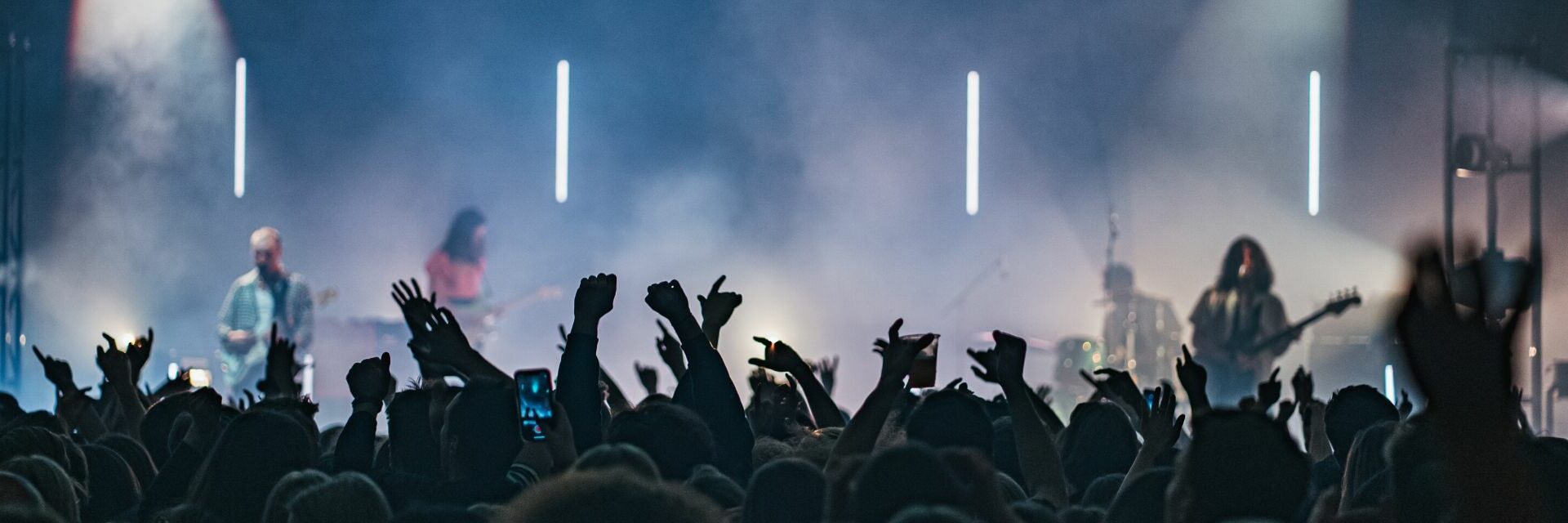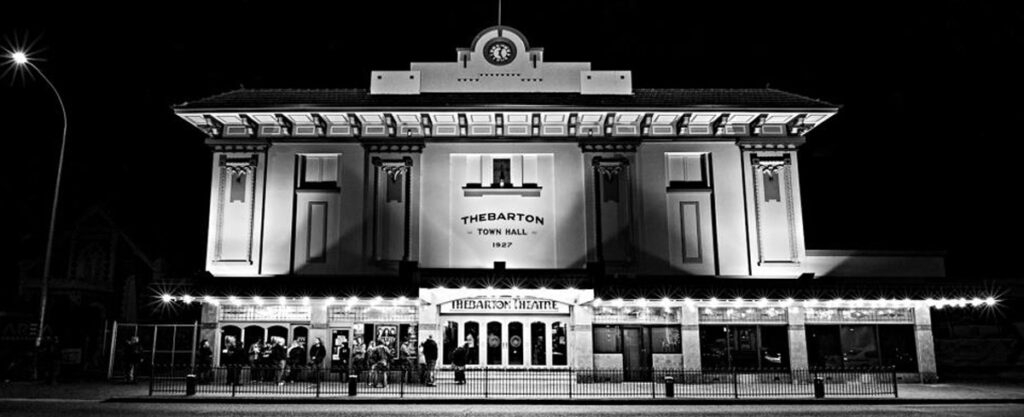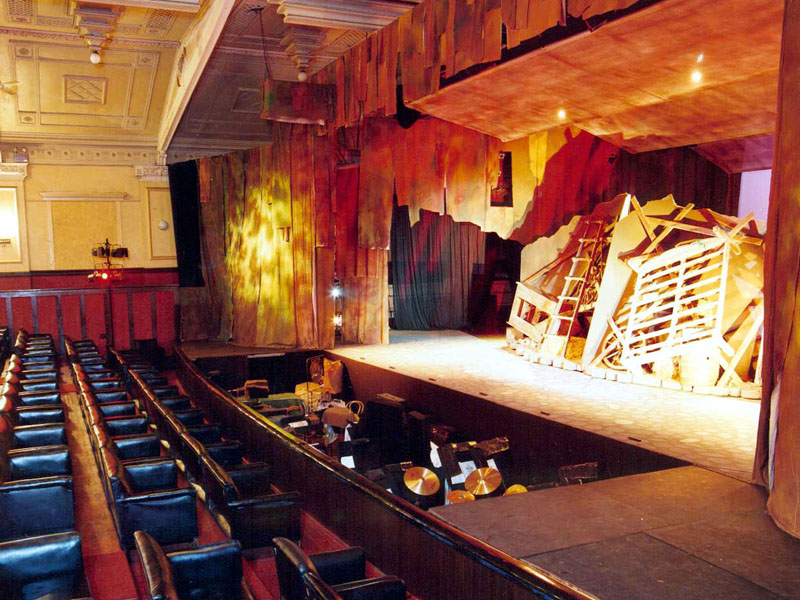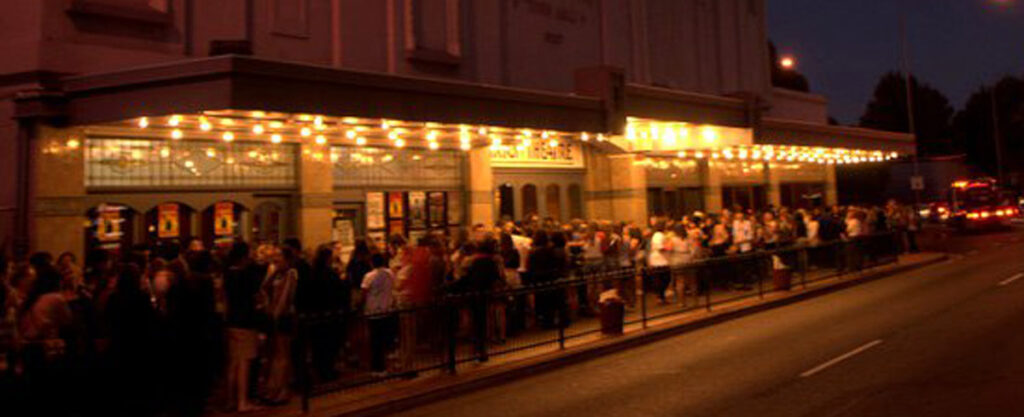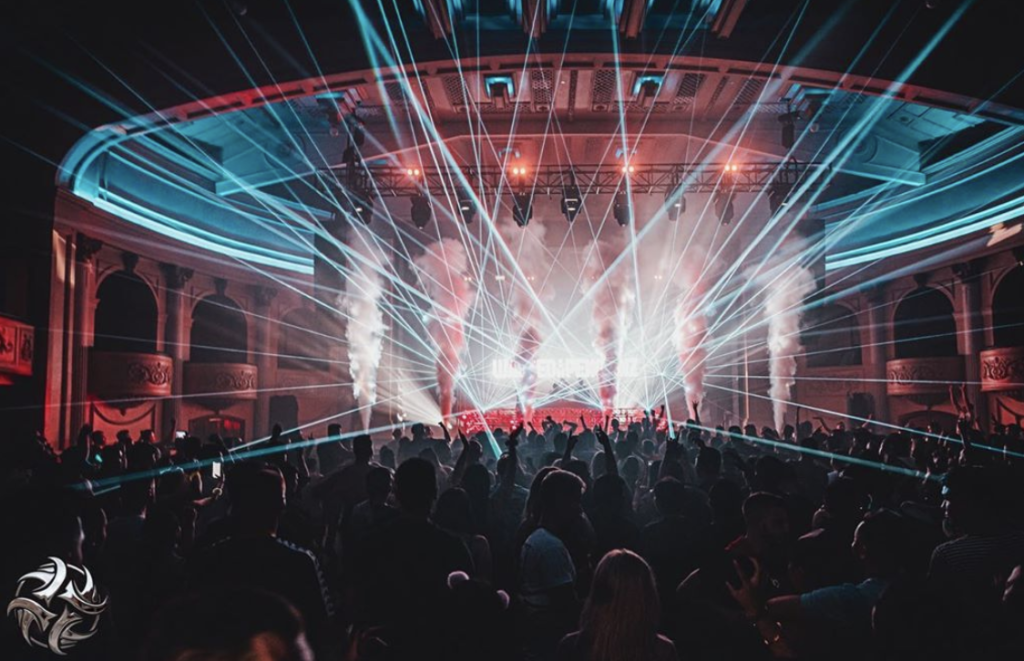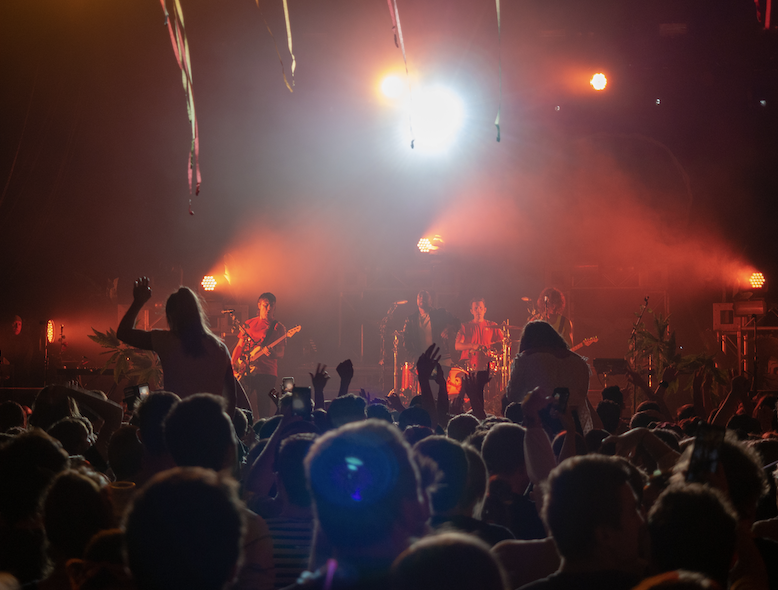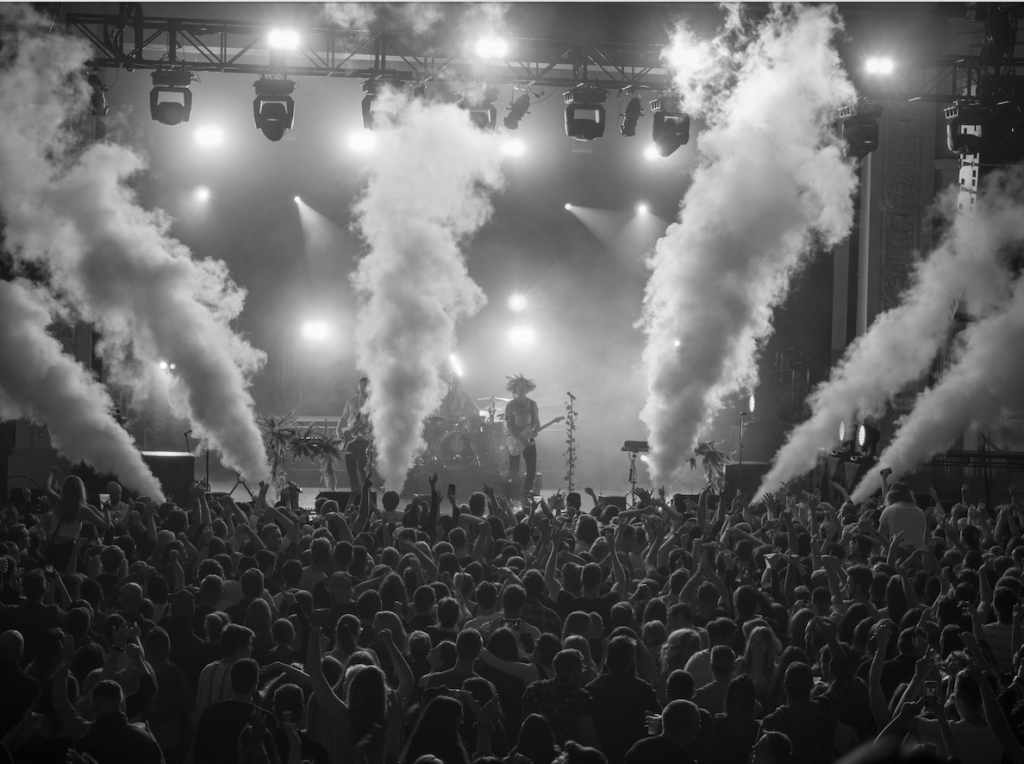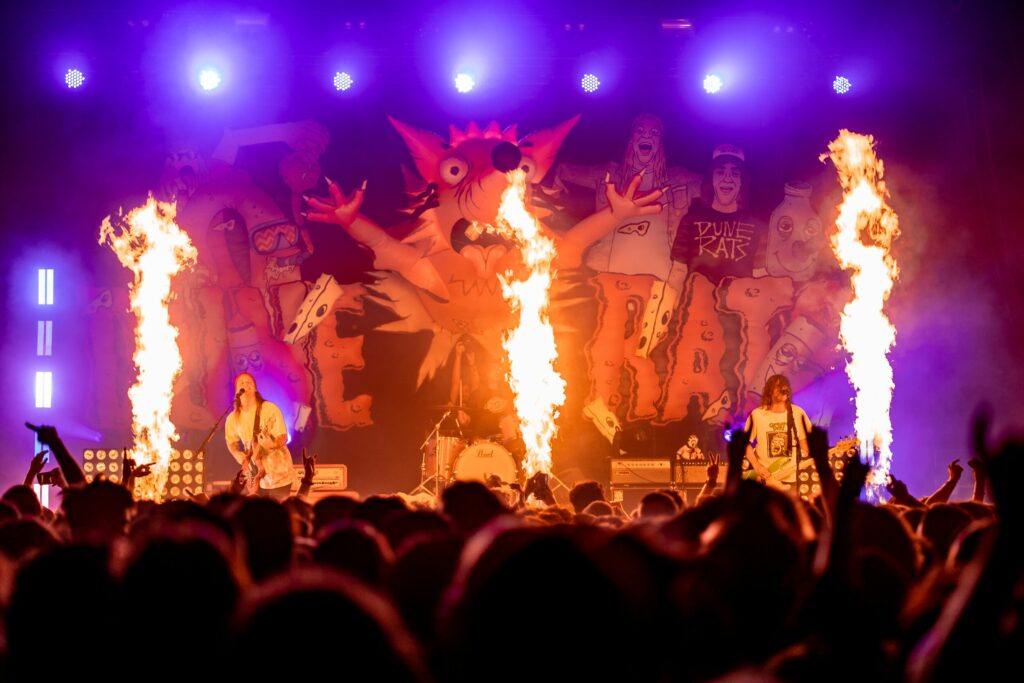HISTORY
THE BEGINNING
Thebarton Theatre was officially opened on Monday 11 June 1928 by Mayor HS Hatwell Esq and was considered the premier venue for concerts, films and theatre performances in South Australia. Known as the Thebarton Town Hall and Municipal Offices, the building was built by the Thebarton Council at a cost of £30,000. The opening was a grand occasion with residents satisfied that this was a truly modern building with modern conveniences. An elaborate and luxurious theatre, Thebarton featured seating for 2,000 people, a large stage, beautiful proscenium arch and indirect lighting. The theatrical lighting installed in the theatre was regarded as an innovation with “all the colours of the rainbow thrown forth through the protruding cone and rosette ceiling.” The hall was fitted with 2,000 lights; with only about 200 visible, the remainder were used for dissolving and dimming effects. As well as the state-of-the-art lighting, there was a full orchestra and a variety of seating arrangements and rooms for use. A large Assembly Room was used for functions and dancing, and the administrative building included offices and the Council Chambers, as well as the Mayor and Mayoress’ rooms. Another room was set aside for the School for Mothers, a precursor to the Mothers and Babies Health Association. The Dress Circle provided spacious seating with the front section boasting luxurious armchairs with room for two people. Ten boxes to the side of the Stalls were also fitted with armchairs to create Balcony seating on each side of the auditorium. Seating in the stalls was also designed for comfort with specially – constructed chairs finished in gold leather.
ARCHITECTS
Kaberry and Chard of Sydney were the great Architects of Thebarton Town Hall, who also succeeded in reproducing a façade for the Council Chambers that matched Colonel William Light’s Theberton House in England.
Kaberry and Chard designed over 57 grand theatres across Australia, however only 6 theatres remain, including:
★ Woodville Town Hall, Woodville, SA
★ Enmore Theatre, Sydney, NSW
★ Odeon Theatre, Norwood, SA
★ Anita’s Theatre, Thirroul, NSW
★ Roxy Theatre, Leeton, NSW
★Montreal Community Theatre, Tumut, NSW
Thebarton Theatre, Woodville Town Hall and the Enmore Theatre in Sydney are the only establishments by these historic architects that remain lively music and concert venues, and are integral to the Australian Entertainment Industry. Woodville Town Hall was also leased and operated by Daniel Clifford as a picture theatre from 1927, with a similar capacity and style as Thebarton Theatre. These venues made ‘the West’ a hub of world-class entertainment in South Australia. This continues today with both historical buildings providing a variety of quality live concerts weekly.
The Odeon Theatre in Norwood is now home to the Australian Dance Theatre and others are used as community theatres or cinemas. Thirteen of the other buildings by Kaberry and Chard have been demolished, converted to office spaces or have become derelict.
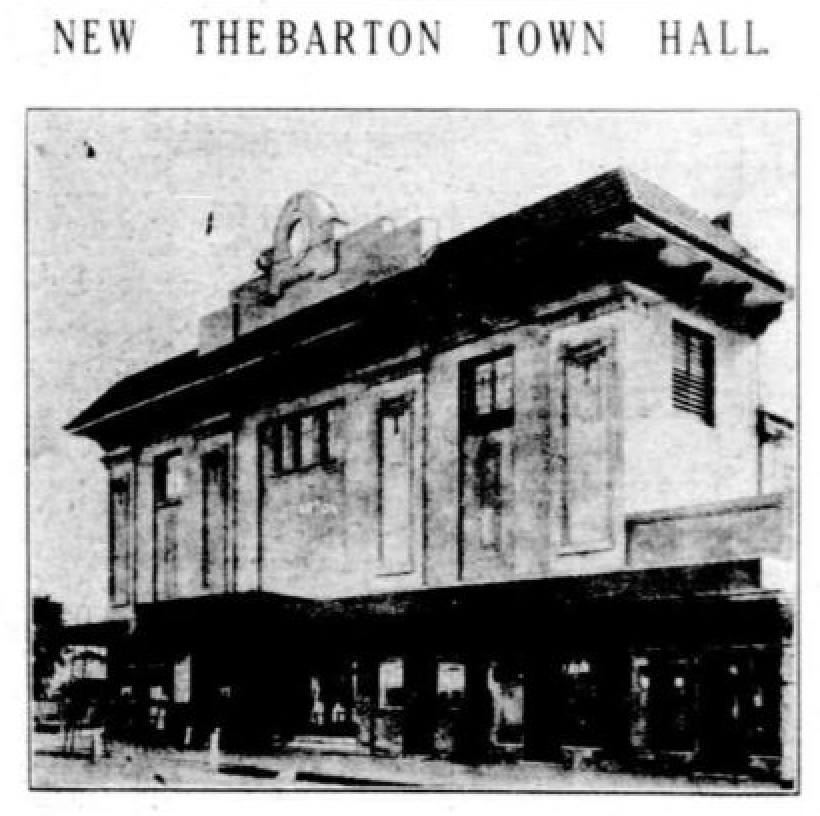

Squash 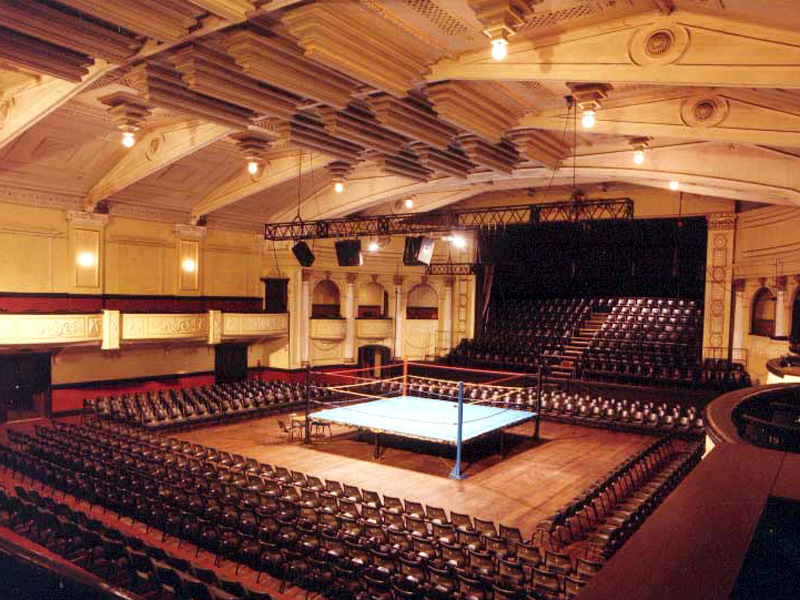
Wrestling 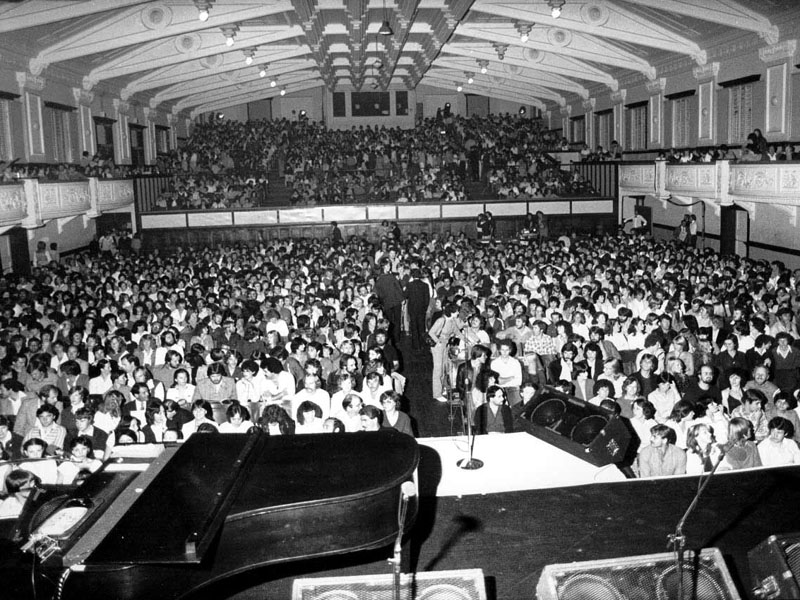
1929 Performance 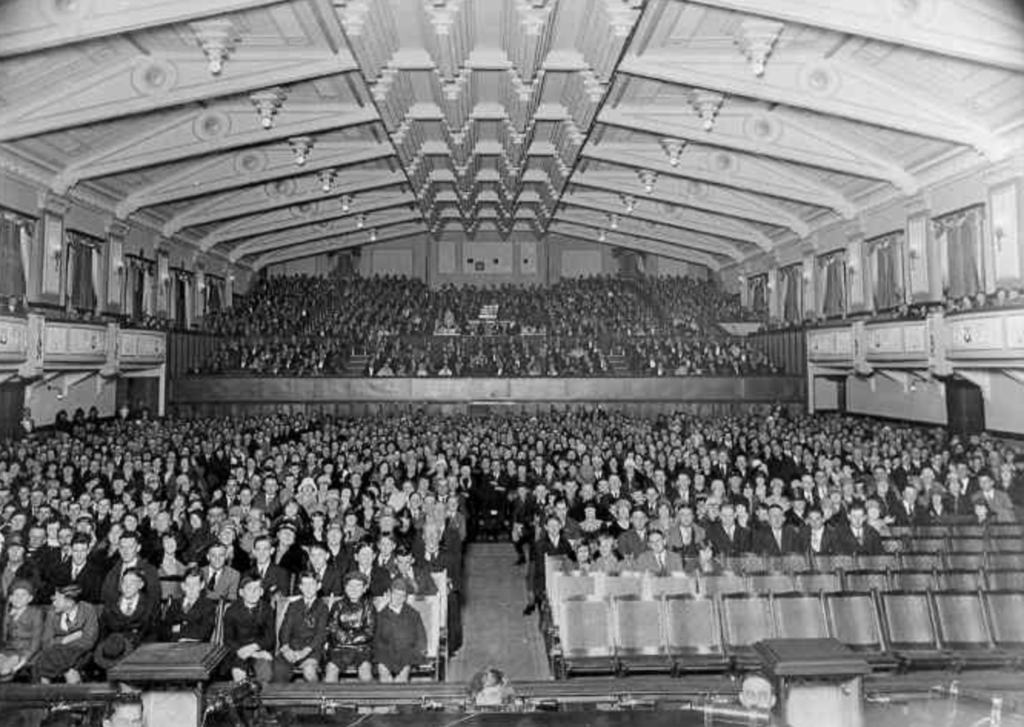
Opening Ceremony, 11 June 1928
HISTORY HIGHLIGHTS
ADELAIDE FESTIVAL OF THE ARTS
When the Adelaide Festival of Arts began in 1960, there were not sufficient traditional theatres in the state with the required facilities to host world class performances, such as a fly gallery – a necessity if the Adelaide Festival was to proceed in its quest to become a world-famous entity. Thus, creating the need to develop the Adelaide Festival Centre. Opened in 1973, the AFC was one of the first purpose built arts venues in any Australian capital city.
Between 1962-82, Bob Lott was the Venue Manager for the Adelaide Festival of Arts at Thebby. In this role, Bob was required to cater for international acts and thus began Weslo’s relationship with Thebarton Theatre and the drive to elevate Thebby to its full potential and reinstate the glory of the State Icon.
Under Weslo Holdings continuous restoration, management and development of the theatre, Thebby has succeeded as a premier venue for the Adelaide Festival of Arts.
Thebby the Beautiful has hosted a diverse range of Festival artists including:
1964
Bayanihan Philippine Dance Company
1968
Acker Bilk & his Paramount Jazz Band
Jacques Loussier Trio
The Gilbert & Sullivan Society: The Yeomen Of The Guard
1982
Dance Theatre of Pina Bausch
1984
The Three legends of Kra
Sky
1986
The Guinness Celebration of Irish Music
1988
Theatre Repere of Canada: The Dragon’s Trilogy
Japan’s Spectacular Bhuto Dancers: Sankai Juku
1990
Tango!
Four Guitars
Christy Moore
Irene Papas
1996
Kronos
Nosferatu
Fautus
Tito Puente Latin Jazz EnsemblE
Scrabian – ASO
Nancy Sinatra
Remmy Ongala & Orchestra Super Matimila
Downtown Explosion: Bang On A Can Allstars
1998
Ex Machina: The Seven Streams of the River Ota
2002
Nick Cave & The Bad Seeds
2006
Breakin’ Ground
Talvin Singh
2013
Kronos Quartet
Van Dyke Parks
2015
Mogwai
2016
Sunn O)) and Magma
Godspeed You! Black Emperor
Sufjan Stevens
Unsound Adelaide
2019
Tim Minchin
2020
Buŋgul
HOADLEY’S BATTLE OF THE SOUNDS
‘Hoadley’s Battle of the Sounds’ was a cornerstone in the development of Australian music. From 1966-72, the State Championships were held at Thebby, providing the birthplace of many Aussie music greats. Zoot, The Twilights, Masters Apprentices and Fraternity are just a few who toured the world, all returning to the Thebby stage during their epic careers.
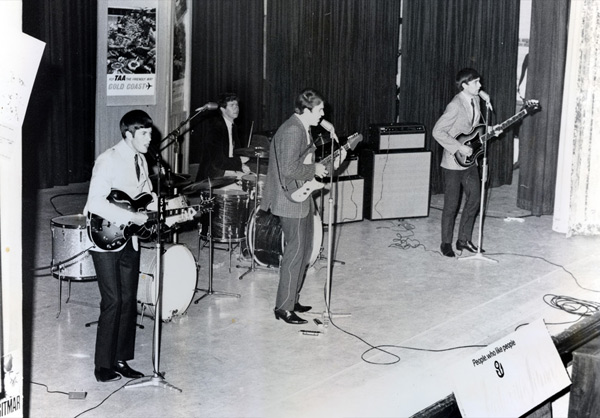
THE SILENCE, July 7th, 1967
Hoadley’s Battle of The Sounds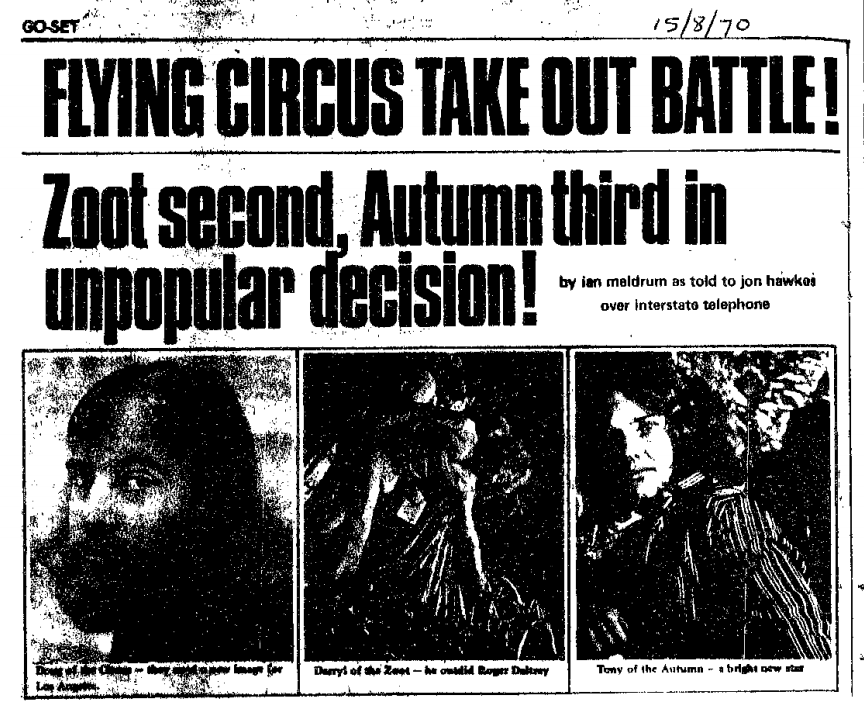
Go-Set Pop Music Newspaper
15 August 1970
MUSICALS
‘Nunsense’ (1987), ‘Boy’s Own McBeth’ (1981) and ‘Hair’ (1992) were great periods in the Weslo era. ‘Hair’ was so popular that a 7th week was added to its season, totalling an incredible run of 47 shows! ‘Nunsense’ was also an extremely popular production, with thousands of patrons attending, many dressing up as nuns, throughout its 6-week run. These musicals demonstrate the versatility and flexibility Thebby offers for the staging of all forms of live entertainment. The capacity to transform this charming historic venue into so many practical and diverse configurations reiterates how important an asset Thebby is to the Entertainment Industry
SCHOOL CONCERTS
For many South Australians, Thebby is a home for their important school memories. Since the venue’s establishment, Thebby’s auditorium has filled with pupils and parents enjoying Speech Nights, Christmas Concerts, End of Year Masses, Presentations, Music Recitals and more.
“How beautiful [Thebby] still is, when I went to Thebarton Girls High School we went there all the time for our singing and assembly.” – Pauline, Thebby Patron
Schools included:
★ Marist Brothers’ College 1944-84
★ Thebarton Technical Girls High School 1947-68
★ Salesian College 1960s
★ Annesley College 1985-94
★ Siena College 1985-89
★ St. Peter’s College 1986-87
★ Wilderness School 1986-87
★ Sacred Heart College 1990-93
★ Loreto College 1997-01
★ Cabra College 1998
★ Cornerstone College 1998
★ Temple Christian College 2001-2019
★ St. Joseph’s Memorial School 2004 & 2016
★ Allenby Gardens Primary School 2010-14
★ Whitefriars School 2012
★ Torrensville Primary School 2019
THE AGE OF WESLO
In 1979 Weslo Holdings Pty. Ltd took over the lease of the Thebarton Town Hall and renamed it Thebarton Theatre. The building had deteriorated significantly in the latter years of the Council’s management, and Weslo Holdings had to spend more than $1 million on redeveloping the theatre. It was fitted out with new foyers, toilets, electrics, carpets, seating, administration areas, bars, and confectionary and merchandise areas. The developers were instructed to perfectly blend the new work with the old, and have done brilliantly with the redevelopment, winning praise from historical theatre societies world-wide for its heritage-sensitive treatment. “There is not to be any way that you can see where the old work finishes and the new starts” were the directions given to the architects and builders. Weslo Holdings is very proud of the fact that, except for the initial loan of $350,000 taken out by the council, all other development has been undertaken and paid for by the company. Following the redevelopment, Thebby renewed its position as a favourite place for entertainment in Adelaide, particularly on the contemporary music scene. The size and flexibility of the theatre makes it easily suited to a wide variety of events, from children’s concerts to alternative rock and dance acts, and even sporting events, such as wrestling and kickboxing tournaments.
TODAY
The medium-sized venue now seats 2000 people and is perfect for young bands breaking into the concert circuit, as well as more established bands that prefer the intimacy of the Thebby to huge and impersonal stadiums. Alternative bands love the theatre where they can perform right in the midst of the energy and excitement of their fans. It can be transformed through a number of seating arrangements from a 700 seat lyric mode, suited to more intimate performances, to ‘in the round’ seating for sporting events. The theatre can also use the lounge/balcony section only seating, which is perfect for events such as The Dance Theatre of Pina Bausch. Thebarton Theatre is licensed, and has kitchen facilities and a number of breakout areas that can be used for conferences and seminars. The old Council Chambers, lounge and offices have not been forgotten and are also available for hire. Opened in 2018, our outdoor bars are situated on both sides of the theatre and provide the perfect atmosphere for a pre-gig drink. Thebarton Theatre is a popular and versatile historic treasure situated just ten minutes from the city centre.
